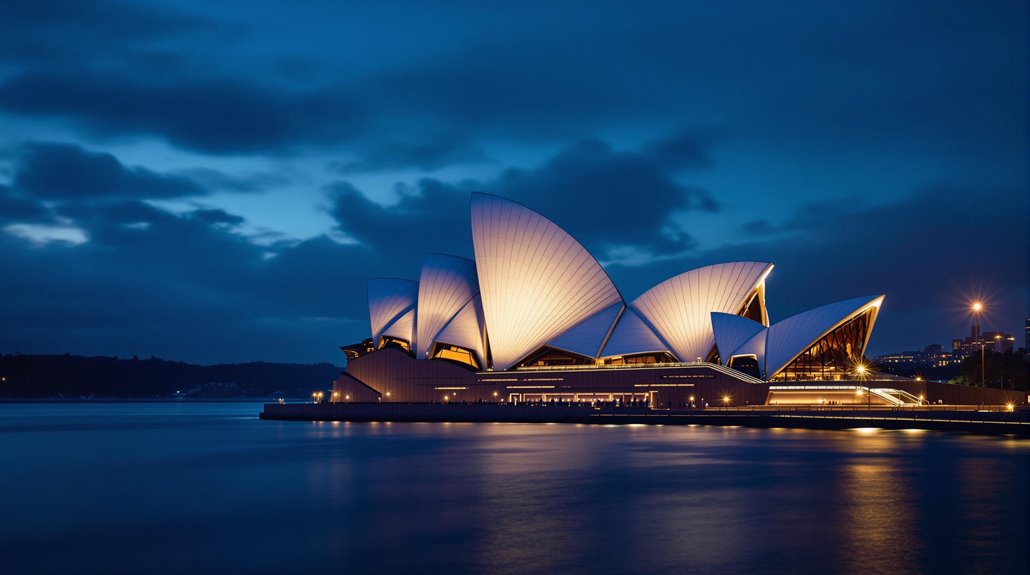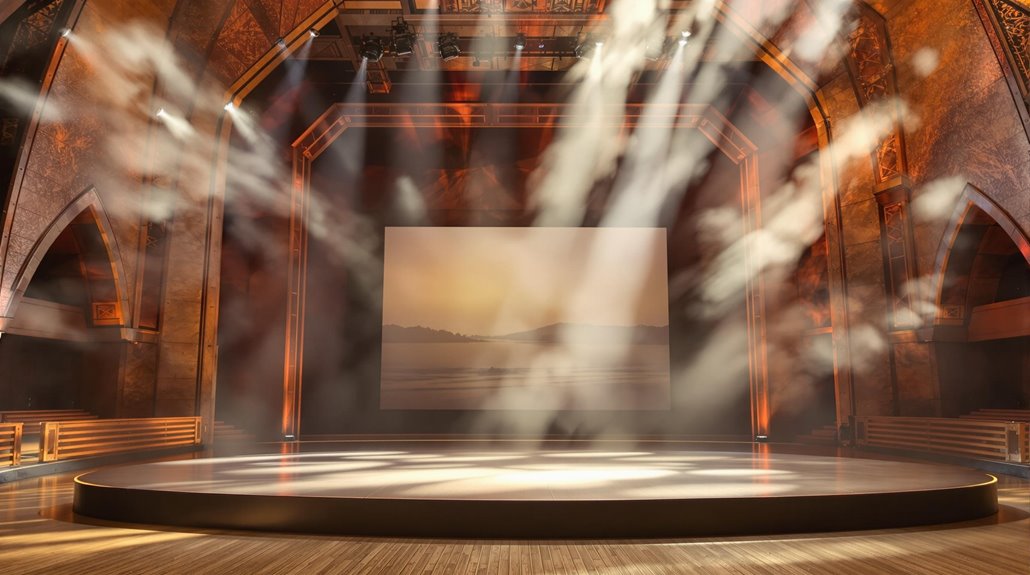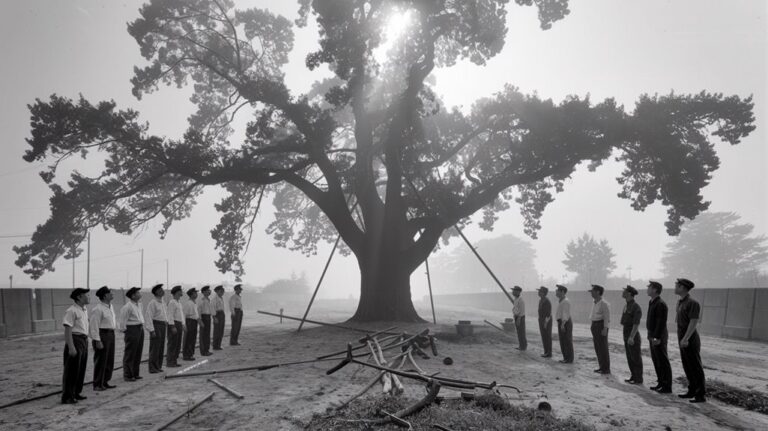Fiona Wood’s Spray-On Skin and the Opera House Fundraiser That Fueled Her Dream
You might not know that a Yorkshire-born surgeon's quest to heal burn victims faster led to one of medicine's most remarkable partnerships with the arts. When Fiona Wood developed her spray-on skin technology in Perth, Australia, she couldn't have predicted that the Sydney Opera House would become her unlikely ally. Through a series of fundraising galas following the 2002 Bali bombings, this iconic venue helped transform an innovative medical treatment from a promising concept into a life-saving reality.
A Surgeon's Groundbreaking Vision for Burn Treatment

While burn treatment had seen limited advances for decades, Dr. Fiona Wood and Marie Stoner revolutionized the field in the early 1990s with their groundbreaking spray-on skin technology.
Their innovative approach to surgical advancements transformed what was once a lengthy, painful healing process into a remarkably efficient treatment. Like the principles outlined in Write Now, their work emphasizes the importance of clear documentation and process improvement. Early intervention within the first hour of injury has been shown to reduce burn severity by up to 80 percent.
You'll find their technique particularly impressive because it promotes patient empowerment through faster recovery times. By culturing a patient's own skin cells and spraying them directly onto wounds, they've reduced healing time from 21 days to just 5 days.
The procedure, which takes only 40 minutes to prepare in surgery, can be applied within 2-3 days of injury. This breakthrough has saved countless lives, including 28 patients with burns covering 90% of their bodies during the 2002 Bali bombings.
From Yorkshire to Perth: The Journey of Medical Innovation
Despite her humble beginnings in a Yorkshire mining family, Fiona Wood's path to medical innovation began with her studies at London's St. Thomas' Hospital Medical School. Her medical education shaped her approach to patient care, while diverse cultural influences from both Britain and Australia enriched her perspective on healing. Like Mark, who dedicated his life to educating students, Wood found her calling in serving others.
After completing her MBBS in 1981, Wood's journey led her through several transformative stages:
- Training as a plastic surgeon in London and Perth
- Moving to Australia in 1987 to pursue new opportunities
- Taking leadership of Western Australia's Burns Service in 1991
- Establishing the first skin cell laboratory in Western Australia
You'll find her greatest breakthrough came when she partnered with Marie Stoner in 1993, launching a skin culture lab that would revolutionize burn treatment worldwide through their groundbreaking CEA technology. Her determination to reduce healing time led her to develop techniques that shortened the wait for skin grafts from three weeks to just days after injury.
The Science Behind Spray-On Skin Technology
The revolutionary spray-on skin technology that Wood and Stoner developed starts with a remarkably simple concept: harvesting and isolating the body's own cells to accelerate healing.
The cell harvesting process begins with a small skin sample, about the size of your thumbnail. Using enzymes, they separate the skin layers and extract essential cells – keratinocytes, fibroblasts, and melanocytes – which are critical for tissue regeneration. The technology emerged after Wood and Stoner's 1993 collaboration to revolutionize burn treatment.
You'll find it fascinating that this 30-minute point-of-care process can treat an area up to 80 times larger than the donor sample. The cells are suspended in a solution and sprayed directly onto wounds, where they quickly replicate to form new skin. Recent advancements have shown that this technique can reduce surgery time from 8-10 hours to just 2-3 hours.
This technique not only cuts recovery time in half but also minimizes scarring and infection risks, making it particularly effective for treating burns and partial-thickness wounds.
Bali Bombings: A Critical Test for Revolutionary Treatment
On October 12, 2002, terrorist bombings in Bali's nightclub district became an unexpected proving ground for Dr. Fiona Wood's spray-on skin technology.
When 28 severely burned survivors arrived in Perth, you'd have witnessed one of the most challenging mass casualty responses in Australian medical history. The casualties included 88 Australian victims among the 202 people killed in the attacks.
The survivor stories revealed unprecedented treatment challenges, with patients suffering up to 92% body burns. As a Living Treasure of Australia, Dr. Wood's expertise was crucial in this emergency.
Dr. Wood's team faced four critical hurdles:
- Racing against time to treat multiple victims simultaneously
- Managing extensive burns that threatened survival
- Preventing deadly infections across large wound areas
- Minimizing scarring to improve long-term quality of life
The revolutionary spray-on skin technology proved its worth, reducing healing time from 21 to 5 days.
This breakthrough not only saved lives but transformed burns treatment worldwide, leading to Dr. Wood's recognition as Australian of the Year in 2005.
The Sydney Opera House Gala: Funding Tomorrow's Medicine

Following the success of Dr. Wood's spray-on skin treatment during the Bali bombings, the Sydney Opera House stepped up its fundraising strategies to support groundbreaking medical innovations.
You'll find the Opera House's annual New Year's Eve Gala and Ladies' Committee events directing essential funds toward state-of-the-art medical equipment and research programs.
Through community engagement initiatives like the innovative jewellery box key purchase and exclusive sake tastings from bank vaults, donors contribute to life-changing medical advancements.
This January's cross-cultural performance featuring traditional Chinese music will continue the venue's commitment to diverse fundraising events.
The Opera House's fundraising efforts have generated over $1 million in donations, with a significant portion supporting medical research and innovation.
The iconic venue will be illuminated in purple lights on November 15 to raise awareness for pancreatic cancer.
Whether you're attending charity galas, participating in silent auctions, or organizing personal fundraising events, you're helping fuel tomorrow's medical breakthroughs and ensuring treatments like Dr. Wood's continue to transform lives.
Global Impact and the Future of Wound Healing
Since its development in the 1990s, Dr. Fiona Wood's spray-on skin technology has revolutionized global health, transforming burn treatment worldwide.
You'll find this groundbreaking innovation saving lives from Australia to Louisiana, with remarkable outcomes in both patient recovery and healthcare costs.
BioScience Managers provided crucial early funding to help commercialize the technology, paving the way for its global success.
Like Stanford's recent biocompatible spray mesh technology, these advances continue pushing the boundaries of what's possible in medical science.











